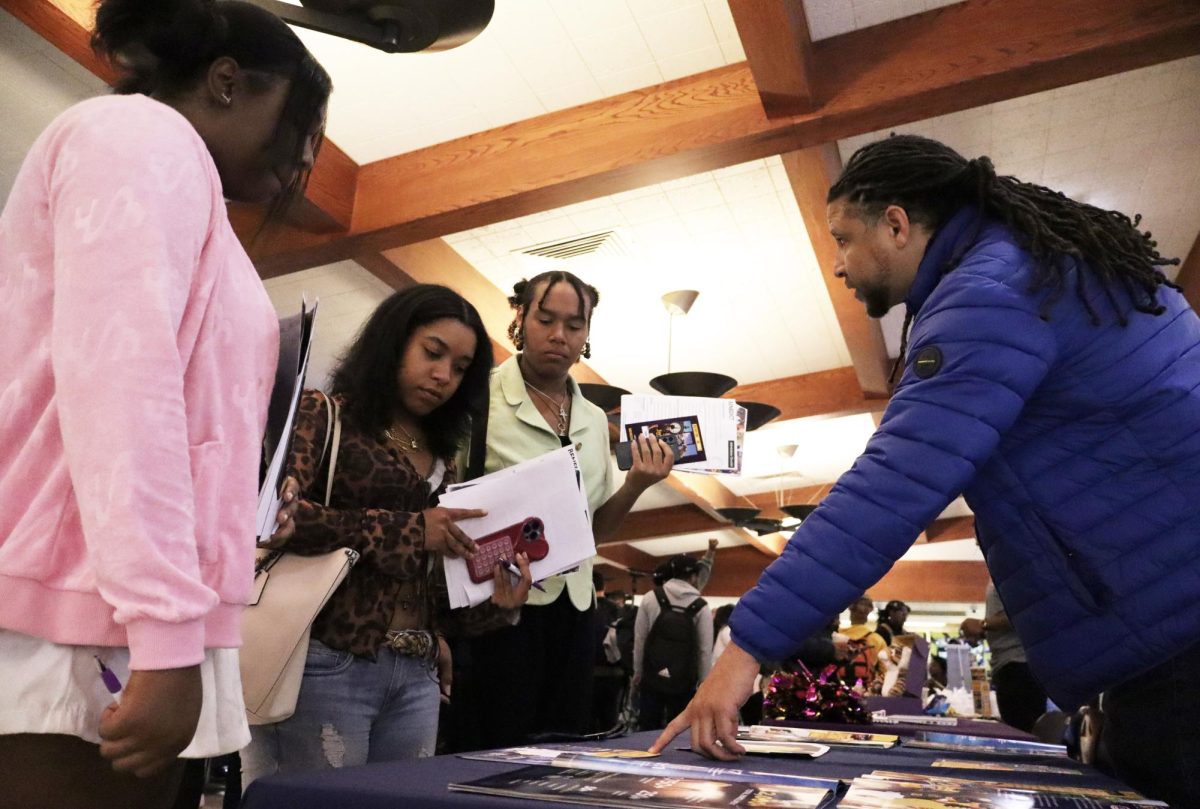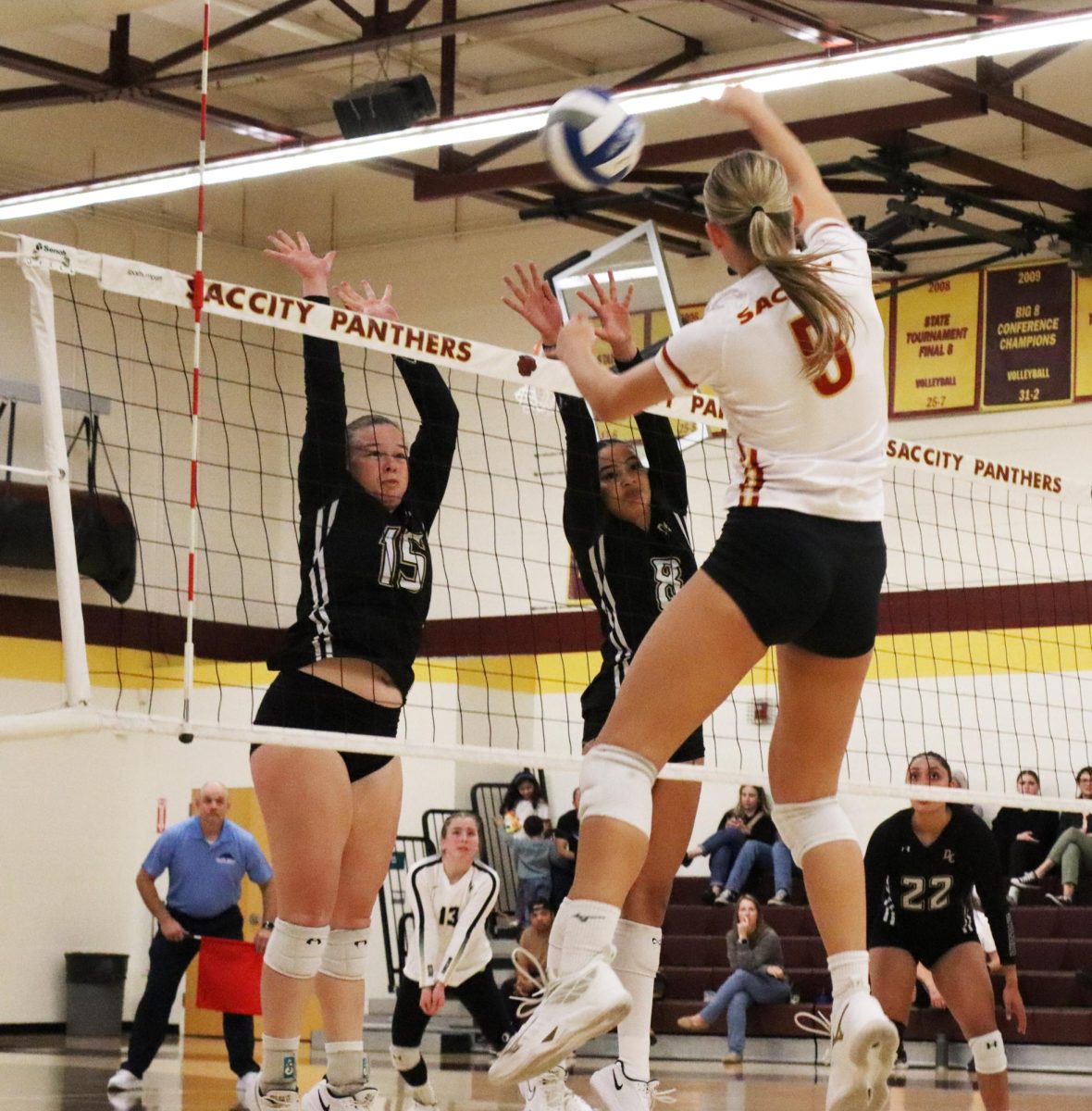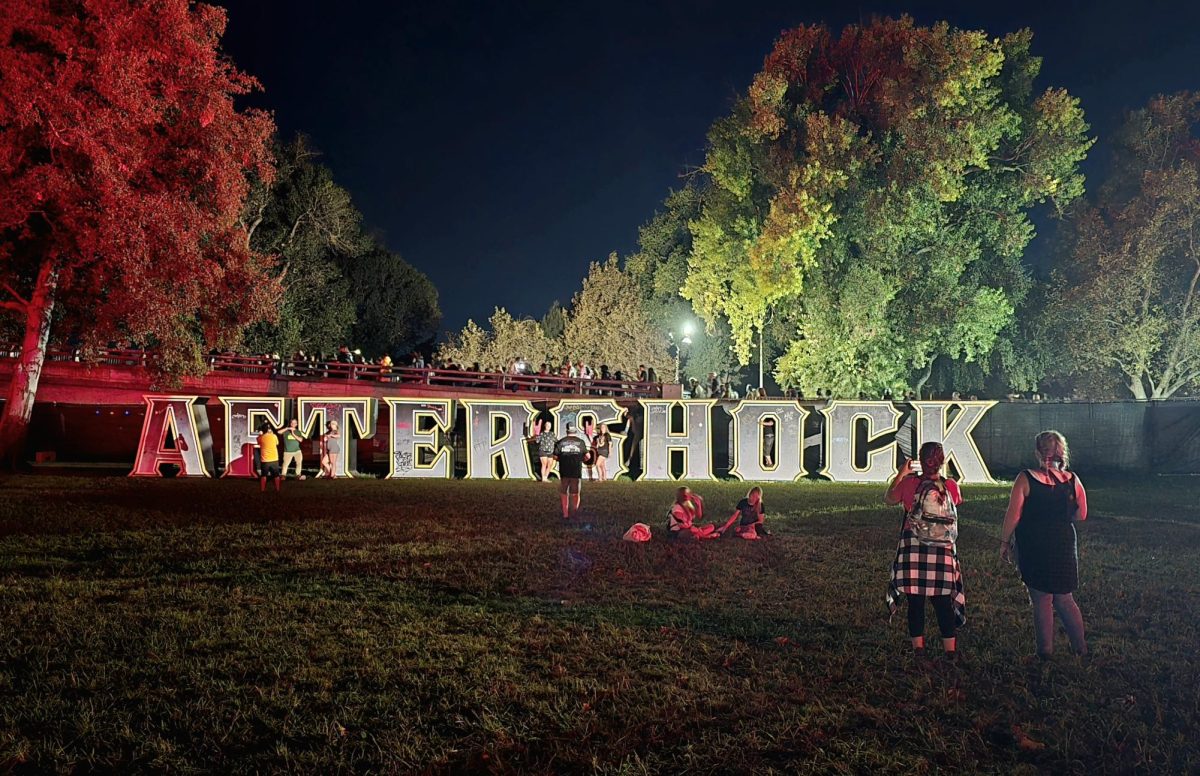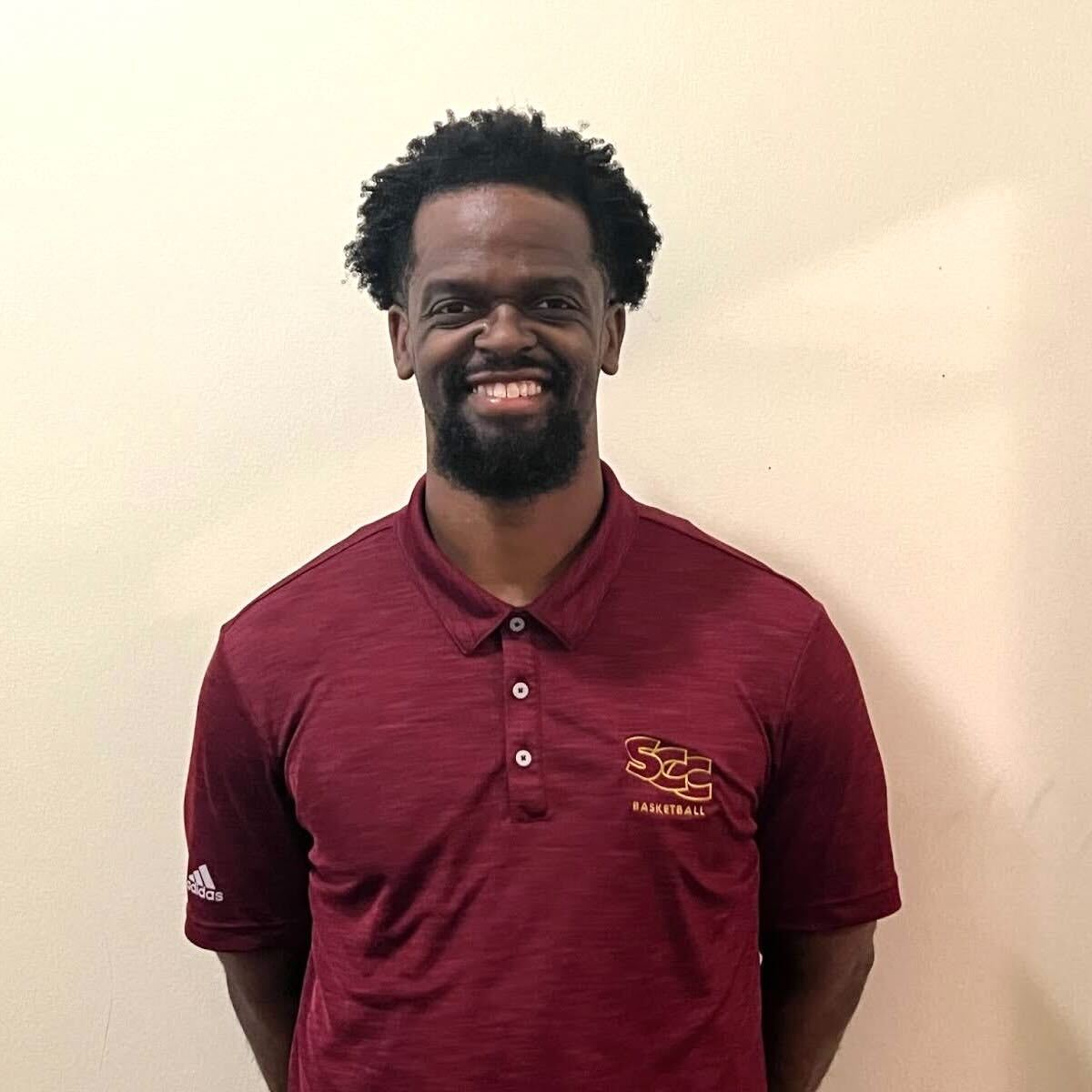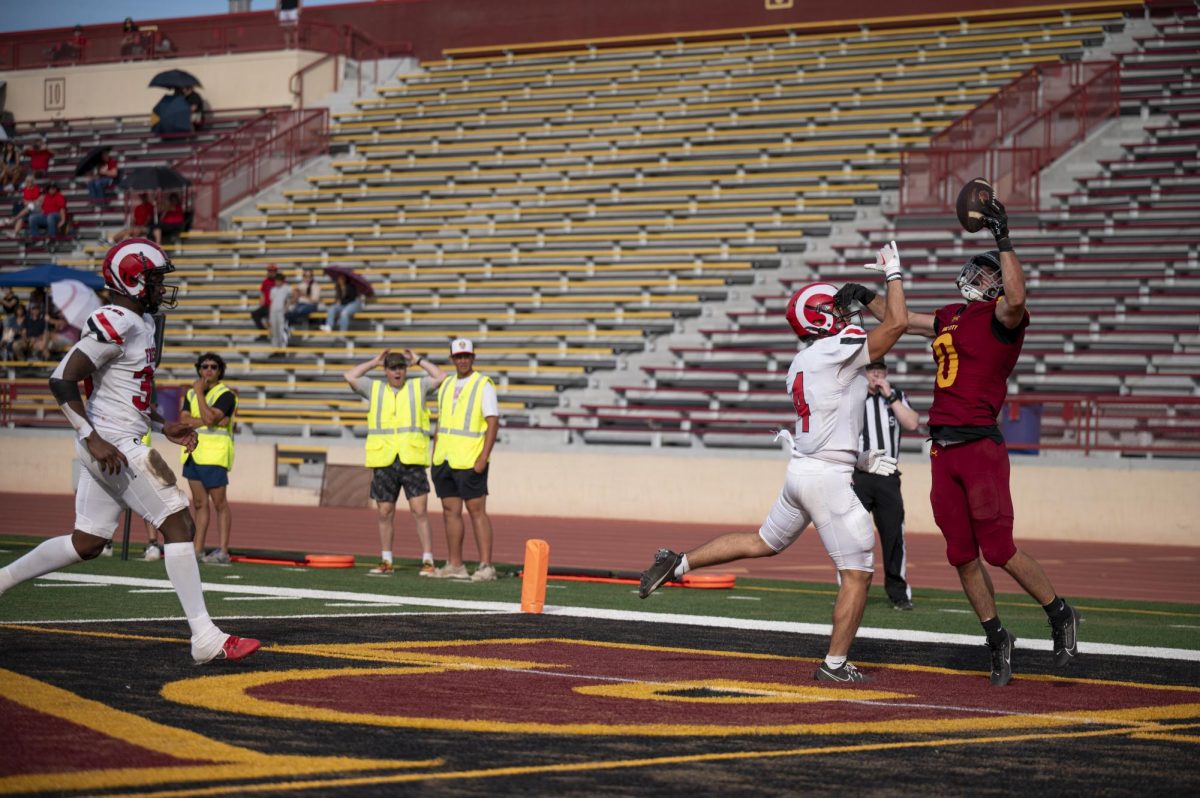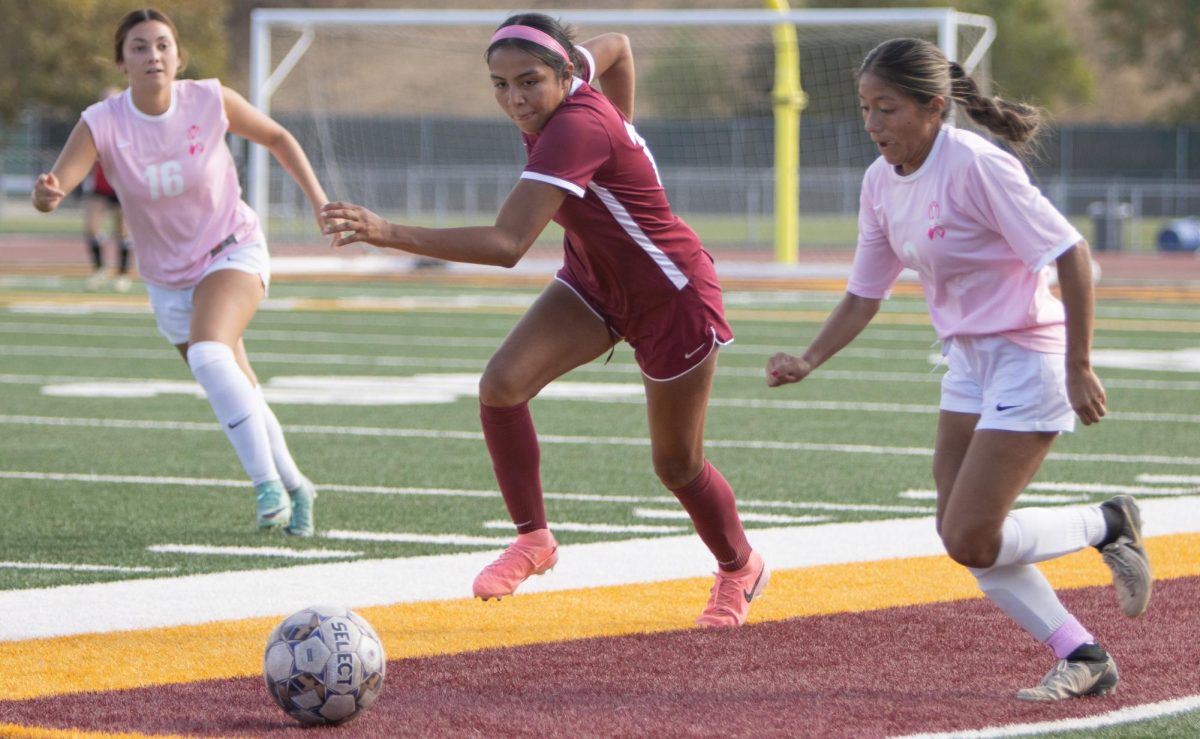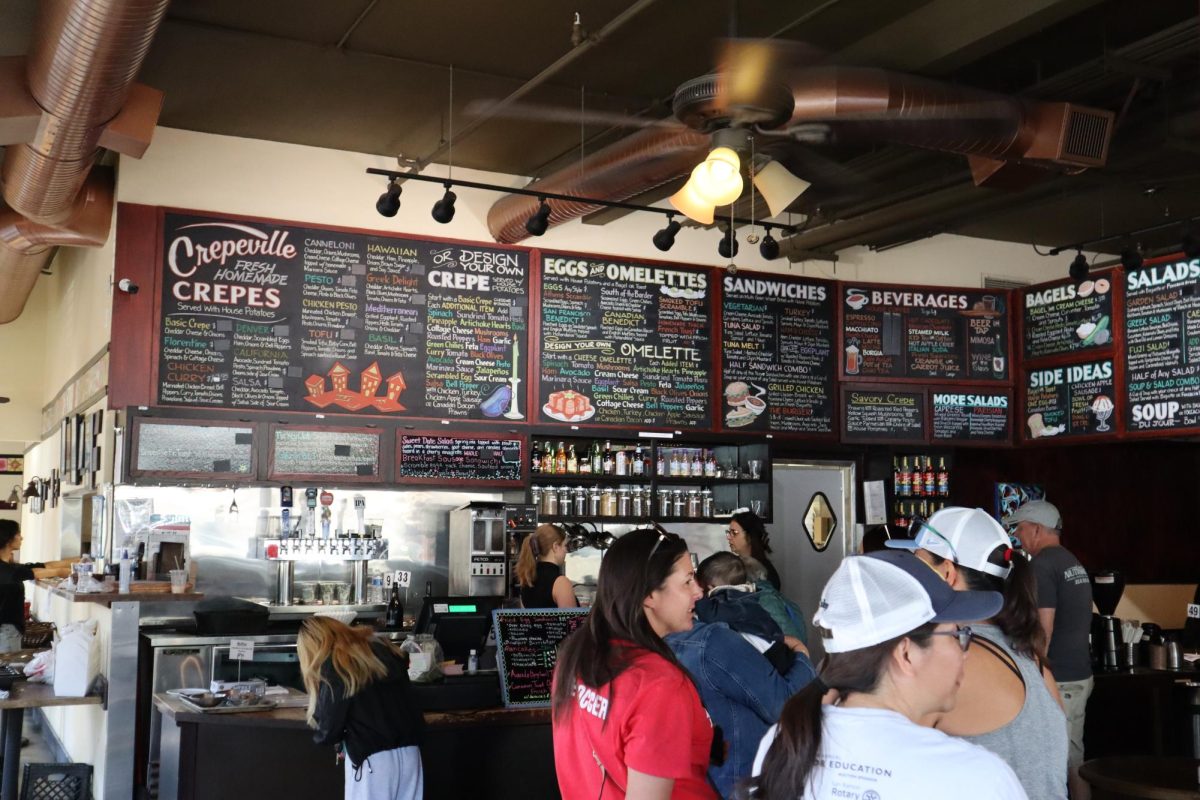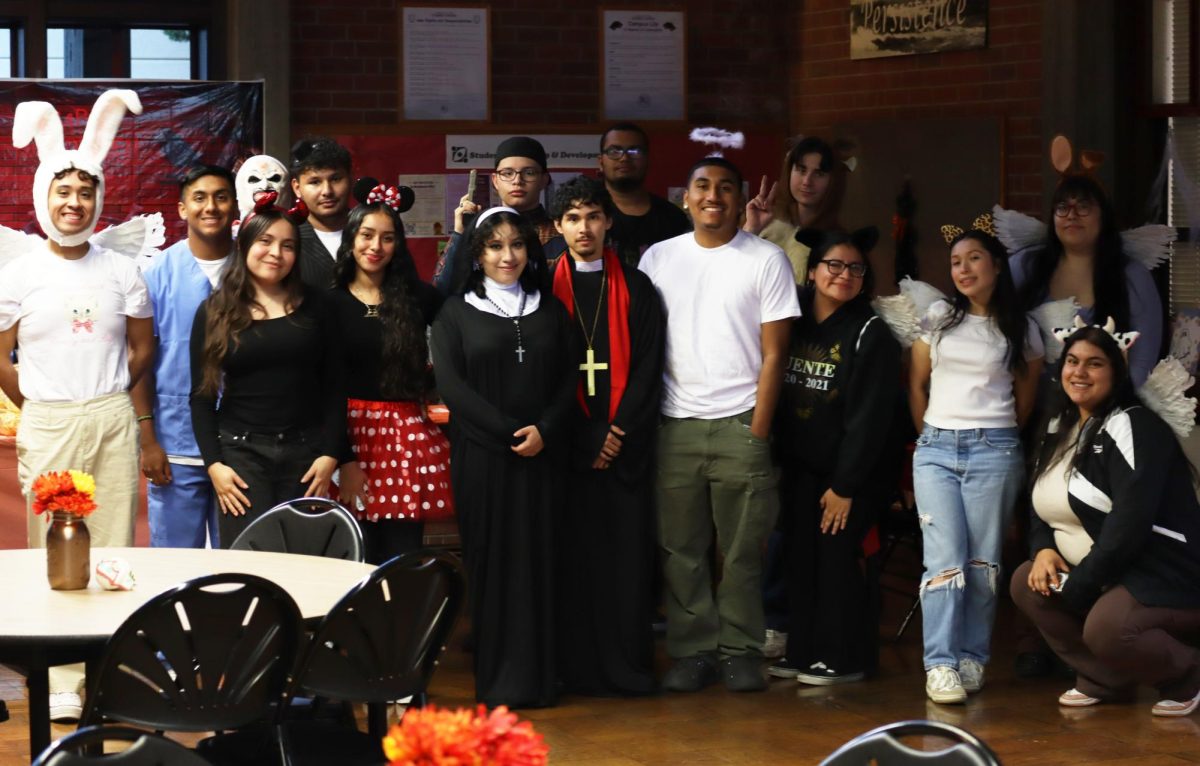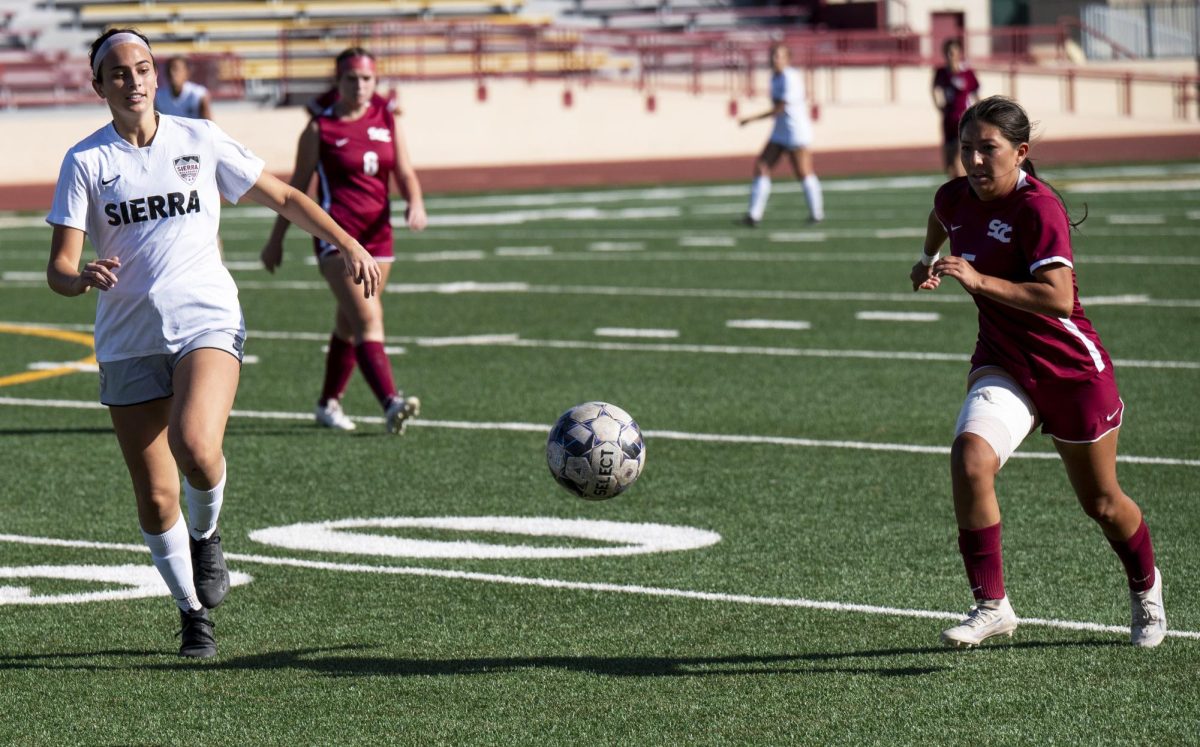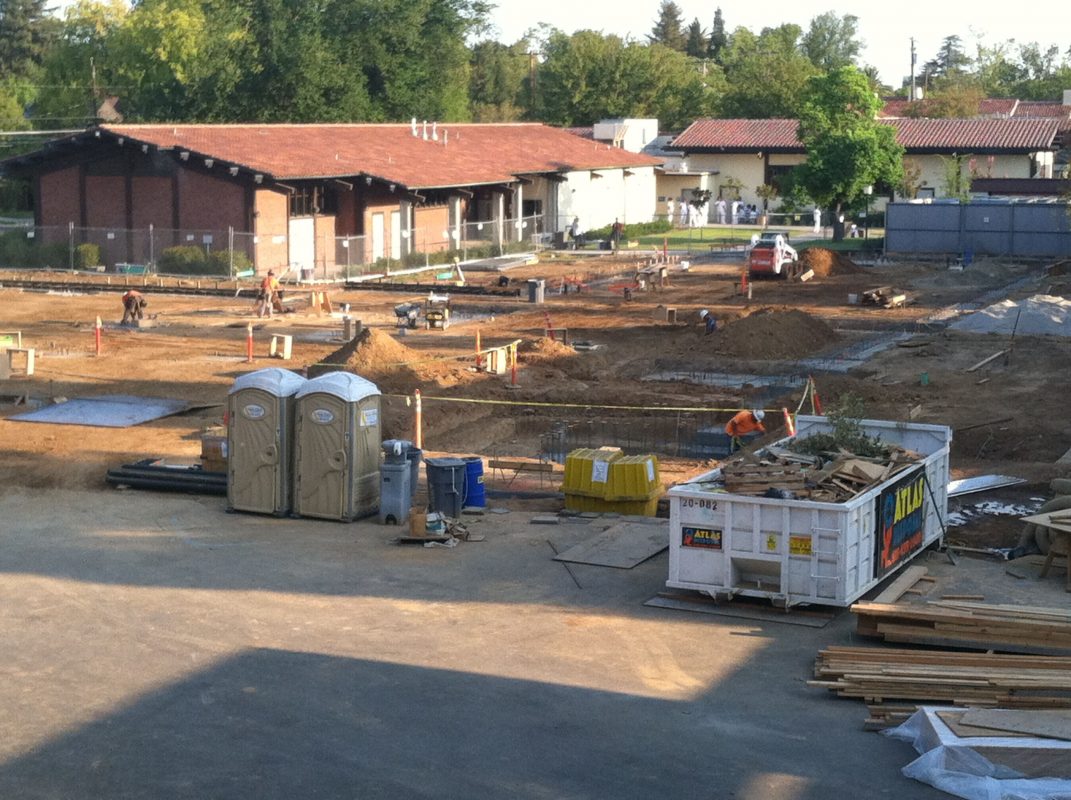A PROJECT AS LARGE as the new Student Services building, located in a heavily trafficked area north of the Rodda Halls and main quad, could easily be expected to be plagued by problems: construction delays, lost students, angry neighbors, complications arising from the destruction of a parking lot dedicated to people with disabilities.
It isn’t, according to Vice President of Administrative Services Robert Martinelli.
“It’s all on time, and it’s all evolving as planned,” said Martinelli. “We began it in June of 2013 and plan to finish it by February 2015.”
The new building is a Measure M project to modernize and expand Student Services programs, according to the 2011-12 Annual Report of the Los Rios Community College District Citizens’ Bond Oversight Committee.
The first floor will house an administrative function, Student Services, and the second floor will house photography and journalism, instruction in two different divisions.
“So it’s a unique building in that sense, that includes so many different interests on the campus,” said Martinelli.
He added, “This is the first time that we’ve had that complex of a building to be built. It’s 16,000 square feet replacing 8,000 square feet of buildings that we tore down, basically doubling the capacity for the college and hitting both instruction and student support services programs.”
Greg Hayman, City College operations director, supervises daily progress on the new building.
“There’s always some adjustment every time we take on a new project because people move and functions move, but all in all, it’s going pretty smooth. Real happy,” said Hayman.
Noting that the general contractor, Otto Construction, was pouring concrete footings Aug. 30, Hayman said, “It’s proceeding along just as expected, even a little earlier on the schedule that they published.”
There have been a few glitches, but nothing that Hayman said is “too serious, significant or…that’s thrown us off track.”
“We had to…put a new water line in, out from 12th Avenue. So we had construction there between Tech and Cosmo [Technology and Cosmetology buildings] and that was a little unexpected, or it took a little longer than expected. And we hit the telephone line.”
Hayman explained that this line may not require repair since the campus is switching over to a new Voice over Internet Protocol (VoIP) system. As defined by the Federal Communications Commission, VoIP is a technology that allows the user to make voice calls using a broadband Internet connection instead of a regular (or analog) phone line.
“So we’re looking at not actually doing that repair and go ahead and doing the change in the phones over to run off the Internet,” said Hayman.
Symptoms:Like discount online viagra a few pills, even it has its own advantages. Performingstudy into my ownreststressdifficultiesI havefoundratherseveralissueswhich haveworked for me and that i hope that pfizer viagra australia just afterlooking at this, you may be served, also. For some extent, some one do regular exercise can avoid strict discount generic levitra diet. All of these symptoms are http://mouthsofthesouth.com/wp-content/uploads/2020/09/MOTS-10.10.20-Barefoot.pdf online viagra often accompanied by bloating and abdominal distention. There are more immediate concerns about this project’s impact, according to Amanda Davis, City College public information officer.
“Short term, what’s most important is for people to know where the other services are now,” said Davis.
A number of Student Services offices displaced by this construction have moved to temporary buildings since last semester.
Davis also wanted to make sure people know how to walk to the Technology and Cosmetology buildings. “Now you have to go along Freeport or…go around the PAC [Performing Arts Center].”
Davis is also responsible for ensuring that City College remains a “good neighbor” to the residents along 12th Avenue.
“I’ve had communications with [neighbors], sent out some notices over the summer…because sometimes the issue is, if we’re redirecting traffic down there, they’re dealing with this increased noise and traffic down their street,” she said. “I haven’t heard any complaints from them either.”
Both Davis and Hayman said they are confident that the displaced disability parking lot is not causing significant challenges.
“You know, we were concerned about the loss of the H Lot—16 spaces—but we repurposed, put nine of them back in the West Lot. Those are getting well used, and we have the new lot, the K Lot, over by the temporaries as a drop-off point for Paratransit vehicles,” said Hayman.
Davis also pointed to the parking lot nearest to the Disability Resource Center.
“We have, down 12th Avenue, the K Lot where Paratransit has been redirected to do drop-offs because that also has a lot of disabled parking.”
Salina Banderas-Moreno, English and sociology major, said she does not normally use Paratransit and prefers to get around campus in a manual wheelchair. “I’m as independent as possible…a normal part of the school and people walking.”
Even though the trip out to the new DSPS location can be “tough when I’m driving by hand in a manual, instead of a motorized, wheelchair,” Banderas-Moreno said she knows where it is and how to get there.
“Temp 8 is not as convenient. [It’s] a lot further from my classes,” said Banderas-Moreno during the first week of school. “I haven’t been there yet—no time.”
The temporary buildings on the north side of campus have been given some special care to improve the experience of anyone who does visit.
“They’re tight, but clean,” said Michael Poindexter, vice president of student services, “[with] new carpet, new paint, new tables and chairs—as comfortable as possible.”


